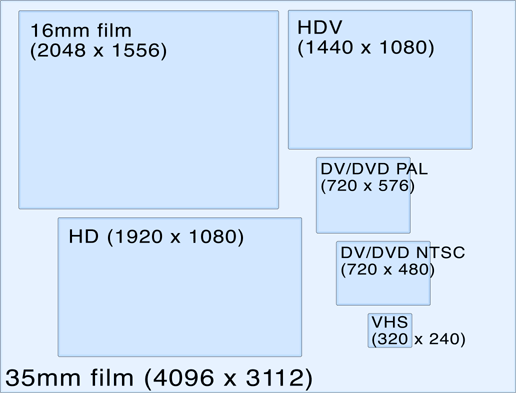Filed under: Old New Media
Update (2011): This was written just before the release of the Red camera. 4K acquisition in high-end video is now routine.
This graphic compares acquisition resolution, the best image you can acquire through a camera (in other words, the quality of your input). 35mm film, benefiting from about 175 years’ worth of improvements in chemical photography, comes out the clear winner:

However, the gap between video and film narrows considerably when it comes to storage resolution, the best image you can extract from your storage medium (the quality of your output). That’s because the perceived quality of an image is influenced more by acquisition resolution than by storage resolution.
Consider the extreme ends of our scale–an image shot on a 35mm film camera and then transferred to VHS tape will, subjectively, look far better than an image shot on a VHS camera and recorded straight to VHS tape, even though the actual storage resolution is in each case the same.
And when you consider that an image stored on analog film must be copied several times before it’s incorporated into a finished work, with accompanying generation loss, you can argue that a lower-resolution but lossless digital storage medium can still hold a final product of comparable subjective quality.
In other words, the current limitations of video are mostly the fault of the video cameras, not the video formats themselves. As a result, animators have a handy way to “cheat.” If you acquire your images with an ordinary multi-megapixel digital still camera, or render them straight from software, you can output to HD video and achieve a result that compares favorably with 35mm film.

